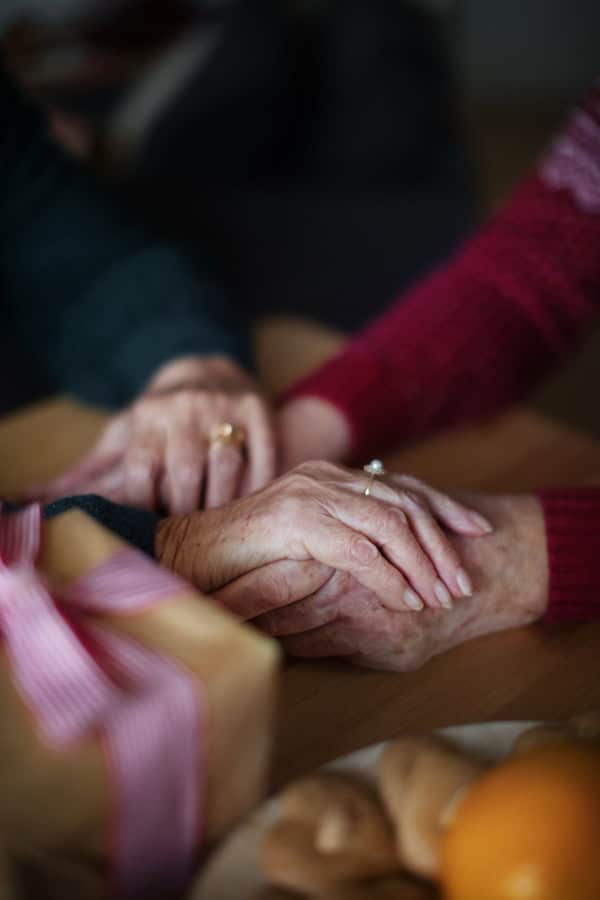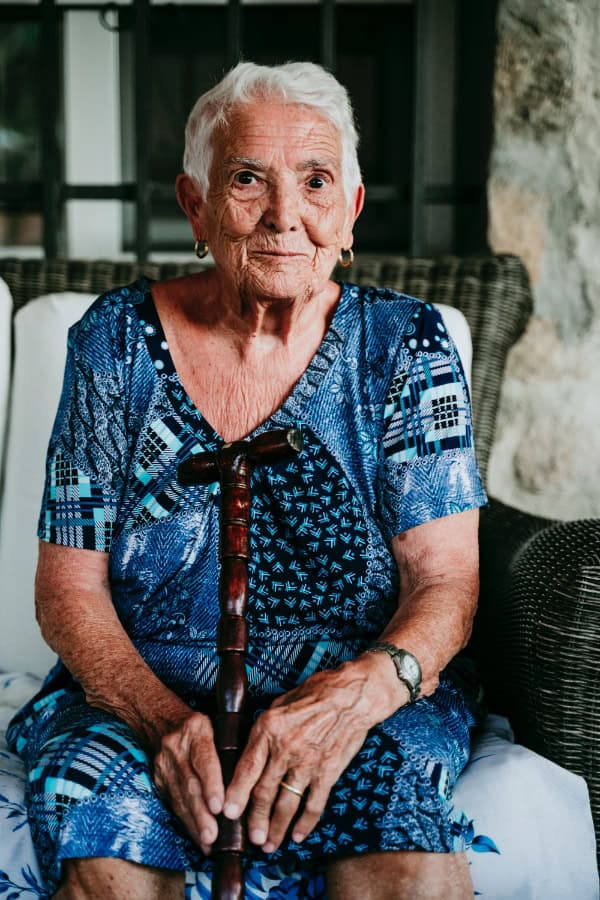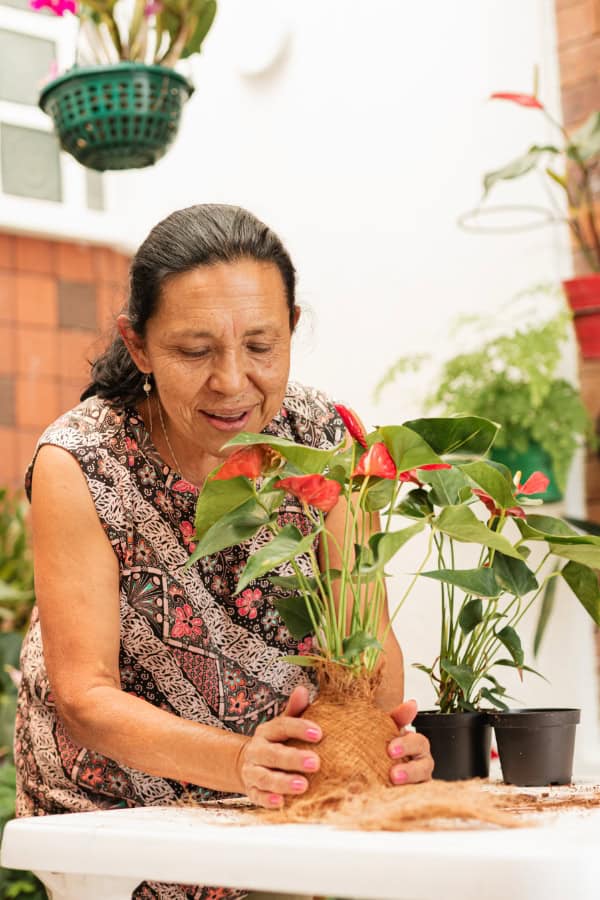Palliative Care for Pain Management
Care Services
Watching a loved one experience pain during a serious illness can be one of the most heartbreaking aspects of caregiving.…















Watching a loved one experience pain during a serious illness can be one of the most heartbreaking aspects of caregiving. As an adult child, you want nothing more than to ease their suffering and ensure they’re comfortable. The good news is that modern palliative care offers sophisticated, compassionate approaches to pain management that can significantly improve your loved one’s quality of life.
Pain doesn’t have to be an inevitable part of serious illness. With the right knowledge, support, and medical team, you can help ensure your loved one experiences comfort and dignity throughout their journey. This comprehensive guide will help you understand how palliative care approaches pain management and what you can do to advocate for your loved one’s comfort.
Understanding Pain in Serious Illness: Why Specialized Management Matters
Pain in serious illness is complex and multifaceted, extending far beyond the physical sensations your loved one experiences. Understanding this complexity is the first step in ensuring they receive the specialized care they deserve.
The Nature of Chronic Pain: Unlike acute pain that serves as a warning system, chronic pain associated with serious illness often serves no protective purpose. It can be constant or intermittent, may worsen over time, and frequently interferes with sleep, appetite, mood, and overall quality of life. This type of pain requires a different approach than the temporary discomfort we might experience from an injury or minor illness.
Why General Pain Management May Fall Short: Traditional pain management approaches often focus on short-term relief or assume that pain will resolve as an underlying condition improves. In serious illness, this approach can leave patients suffering needlessly. Palliative care specialists understand that pain management in serious illness requires ongoing, proactive care that anticipates changes and adjusts treatment accordingly.
The Ripple Effect of Uncontrolled Pain: When pain isn’t properly managed, it affects every aspect of your loved one’s life. Sleep becomes elusive, leading to fatigue and confusion. Appetite decreases, causing weakness and nutritional deficiencies. Mood suffers, potentially leading to depression and anxiety. Social connections may weaken as your loved one withdraws from activities and relationships. Most importantly, uncontrolled pain can rob your loved one of the ability to enjoy precious time with family and friends.
The Urgency of Early Intervention: Research consistently shows that early, aggressive pain management leads to better outcomes and improved quality of life. Waiting until pain becomes severe makes it much more difficult to control. This is why palliative care specialists advocate for proactive pain management from the time of diagnosis, not just during end-of-life care.
The Palliative Approach to Pain Relief: Beyond Traditional Medicine
Palliative care takes a holistic approach to pain management that recognizes pain as more than just a physical sensation. This comprehensive approach addresses the whole person – body, mind, and spirit – and involves the entire family in the care process.
Total Pain Concept: Palliative care specialists understand that pain has multiple dimensions. Physical pain from the illness itself is just one component. Emotional pain from fear, sadness, or anxiety can intensify physical sensations. Social pain from isolation or strained relationships adds another layer. Spiritual pain from questions about meaning, purpose, or faith can be equally significant. Effective palliative care addresses all these dimensions simultaneously.
Individualized Care Plans: No two patients experience pain in exactly the same way, even with identical diagnoses. Palliative care specialists spend time understanding your loved one’s specific pain patterns, preferences, goals, and concerns. They consider factors like previous experiences with pain, cultural background, personal values, and family dynamics when developing a pain management plan.
Preventive Rather Than Reactive: Instead of waiting for pain to become severe before treating it, palliative care takes a preventive approach. This means maintaining a baseline level of comfort and preventing pain flares before they occur. This proactive strategy is much more effective than trying to “catch up” with severe pain after it develops.
Quality of Life as the Primary Goal: While traditional medicine often focuses on extending life, palliative care prioritizes quality of life. This means that pain management decisions are made based on what will help your loved one feel most comfortable and able to engage in activities that matter to them, rather than what might technically be the “strongest” or most aggressive treatment.
Common Pain Management Medications in Palliative Care
Understanding the medications your loved one might be prescribed can help you feel more confident about their care plan and better able to support them in following their treatment regimen.
Opioid Medications: Opioids are often the foundation of pain management for serious illness, and modern palliative care has refined their use significantly. Medications like morphine, oxycodone, fentanyl, and methadone can provide excellent pain relief when used appropriately. Long-acting formulations provide steady pain control throughout the day, while short-acting medications can address breakthrough pain. The key is finding the right medication and dose for your loved one’s specific needs.
Adjuvant Medications: These are medications that weren’t originally designed for pain but can be highly effective for certain types of pain. Anticonvulsants like gabapentin or pregabalin work well for nerve pain. Antidepressants such as duloxetine or amitriptyline can help with both pain and mood. Corticosteroids can reduce inflammation and associated pain. These medications often work synergistically with opioids, allowing for better pain control with potentially fewer side effects.
Topical Medications: For localized pain, topical treatments can be very effective. These might include prescription creams, patches, or gels that deliver medication directly to the painful area. Topical medications can be particularly helpful for skin conditions, localized nerve pain, or joint pain.
Interventional Approaches: When oral medications aren’t sufficient, palliative care specialists may recommend interventional approaches. These might include nerve blocks, epidural injections, or implanted pain pumps. These procedures can provide significant relief for patients who haven’t responded adequately to medications alone.
Addressing Family Fears About Pain Medication
It’s natural for families to have concerns about pain medications, especially opioids. These fears, while understandable, can sometimes interfere with your loved one receiving optimal pain relief. Let’s address some of the most common concerns.
Fear of Addiction: Perhaps the most common concern families express is fear that their loved one will become addicted to pain medications. It’s important to understand that addiction is extremely rare in patients taking opioids for legitimate medical reasons under proper medical supervision. The risk of addiction is far outweighed by the benefits of pain relief in serious illness. Physical dependence, which is a normal physiological response to regular medication use, is different from addiction and can be managed safely by healthcare providers.
Fear of Hastening Death: Some families worry that strong pain medications will hasten their loved one’s death. Research consistently shows that appropriate pain management actually improves quality of life and may even extend life by reducing the physical and emotional stress of uncontrolled pain. When medications are properly dosed and monitored, they provide comfort without significantly impacting life expectancy.
Fear of Side Effects: While all medications can have side effects, most can be effectively managed with proper monitoring and supportive care. Common side effects like constipation, nausea, or drowsiness often improve as the body adjusts to medication or can be treated with additional medications. The temporary discomfort of side effects is usually far outweighed by the benefits of pain relief.
Fear of Tolerance: Families sometimes worry that if strong medications are started “too early,” they won’t work when they’re “really needed.” While tolerance can develop, it’s easily managed by adjusting doses or switching medications. More importantly, there’s no benefit to allowing your loved one to suffer unnecessarily in the hope of preserving medication effectiveness for later.
Non-Medication Pain Management Strategies
While medications are often essential for managing pain in serious illness, non-medication approaches can be valuable complements to pharmaceutical treatment and sometimes provide relief on their own.
Physical Approaches: Gentle massage, heat or cold therapy, and positioning can provide significant comfort. Physical therapy specifically designed for patients with serious illness can help maintain mobility and reduce pain. Acupuncture has shown promise for various types of pain and is increasingly offered as part of comprehensive palliative care programs.
Relaxation and Mindfulness Techniques: Deep breathing exercises, progressive muscle relaxation, and mindfulness meditation can help reduce pain perception and associated anxiety. These techniques are particularly valuable because they give patients a sense of control and can be used at any time without side effects.
Distraction and Engagement: Engaging in meaningful activities, listening to music, watching favorite movies, or spending time with loved ones can help shift focus away from pain. The goal isn’t to ignore pain but to ensure it doesn’t dominate every moment of your loved one’s day.
Environmental Modifications: Simple changes to the physical environment can make a significant difference. This might include adjusting lighting, reducing noise, ensuring comfortable temperature, or arranging furniture to make movement easier and safer.
Spiritual and Emotional Support: Chaplains, counselors, and support groups can help address the emotional and spiritual aspects of pain. Sometimes talking through fears, sadness, or unfinished business can significantly reduce overall suffering.
Breakthrough Pain: Recognition and Rapid Response
Even with excellent baseline pain management, many patients experience episodes of breakthrough pain – sudden increases in pain intensity that “break through” their regular pain control. Understanding and preparing for breakthrough pain is crucial for maintaining your loved one’s comfort.
Recognizing Breakthrough Pain: Breakthrough pain often comes on quickly and can be severe. It might be related to movement, certain activities, or emotional stress, or it might occur without any obvious trigger. Your loved one might describe it as pain that’s much worse than their usual level, or you might notice sudden changes in their behavior, breathing, or facial expressions.
The Importance of Quick Response: Breakthrough pain requires immediate attention. Having a plan in place and acting quickly can prevent the pain from becoming overwhelming and difficult to control. This is why palliative care teams typically prescribe fast-acting medications specifically for breakthrough episodes.
Rescue Medications: Most patients with serious illness will have “rescue” or “breakthrough” medications available for these episodes. These are typically short-acting medications that can provide relief within 15-30 minutes. It’s important to understand when and how to use these medications and to keep them readily available.
Tracking Patterns: Keeping track of breakthrough pain episodes can help the healthcare team identify patterns and potentially prevent future episodes. Note what might have triggered the pain, how severe it was, what medication was used, and how well it worked. This information helps optimize the pain management plan.
Special Considerations for Different Types of Pain
Different types of pain require different approaches, and understanding these distinctions can help you better advocate for your loved one’s care.
Neuropathic Pain: This type of pain results from nerve damage and is often described as burning, tingling, or electric shock-like sensations. It typically responds better to medications like gabapentin or pregabalin rather than traditional opioids alone. Topical treatments can also be particularly effective for neuropathic pain.
Visceral Pain: Pain from internal organs is often deep, aching, and difficult to localize. It may be accompanied by nausea, sweating, or changes in heart rate. This type of pain often responds well to opioids but may also benefit from medications that reduce inflammation or muscle spasm.
Bone Pain: Pain from bone metastases or other bone conditions can be particularly severe and is often worse with movement. It may respond to radiation therapy, bisphosphonate medications, or targeted interventions in addition to standard pain medications.
Incident Pain: This is pain that occurs with specific activities or movements. It might require pre-medication before certain activities or modifications to how activities are performed. Understanding and planning for incident pain can help maintain your loved one’s ability to participate in meaningful activities.
The Family’s Role in Pain Management
As a family member, you play a crucial role in your loved one’s pain management. Your observations, support, and advocacy can make a significant difference in their comfort and quality of life.
Being an Observer and Advocate: You spend more time with your loved one than any healthcare provider, making you uniquely positioned to notice changes in their pain patterns, medication effectiveness, or overall comfort. Don’t hesitate to speak up if you notice that pain isn’t adequately controlled or if you observe concerning changes.
Communication Support: Your loved one might not always be able to clearly communicate their pain level or needs to healthcare providers. You can help by asking questions, taking notes during medical appointments, and ensuring that important information is shared with the care team.
Medication Management: Helping ensure medications are taken as prescribed is crucial for maintaining pain control. This might involve organizing medications, setting up reminders, or helping with administration. Understanding the pain management plan helps you provide better support.
Emotional Support: Your presence, understanding, and emotional support can significantly impact your loved one’s experience of pain. Sometimes just knowing that someone cares and is available can reduce anxiety and improve overall comfort.
Creating Comfort: Simple acts of care – adjusting pillows, providing a favorite blanket, playing calming music, or just sitting quietly together – can complement medical pain management and enhance your loved one’s comfort.
Coordinating Pain Management Across Healthcare Providers
Serious illness often involves multiple healthcare providers, and ensuring good communication about pain management is essential for optimal care.
The Palliative Care Team as Central Coordinator: When your loved one is receiving palliative care, the palliative care team often serves as the central coordinator for pain management. They communicate with other specialists, primary care physicians, and healthcare facilities to ensure consistent, appropriate pain management.
Communication with Primary Care: Your loved one’s primary care physician should be kept informed about all pain management decisions. This ensures continuity of care and helps prevent potentially dangerous drug interactions or conflicting treatments.
Hospital and Emergency Care: If your loved one needs to visit the emergency room or be hospitalized, it’s crucial that hospital staff understand their pain management needs. Keep an updated medication list and contact information for the palliative care team readily available.
Pharmacy Coordination: Establishing a relationship with a single pharmacy can help ensure continuity of care and better monitoring for drug interactions. Many pharmacies now offer specialized services for patients with complex medication regimens.
Pain Management Resources in Southern California
Families in Orange County, Los Angeles, Riverside, and San Bernardino counties have access to excellent pain management resources through various healthcare systems and specialized programs.
Major Medical Centers: Systems like UCLA, USC, Cedars-Sinai, and Kaiser Permanente all have comprehensive palliative care programs with specialized pain management services. These programs often include interventional pain specialists, pharmacy specialists, and multidisciplinary teams.
Community-Based Resources: Many community hospitals and healthcare networks offer palliative care services closer to home. These programs often provide the same high-quality care as major medical centers while being more convenient for families.
Specialized Pain Clinics: For complex pain management needs, specialized pain clinics throughout Southern California offer advanced treatments including nerve blocks, implanted devices, and other interventional procedures.
Support Organizations: Organizations like the American Cancer Society, local hospice organizations, and disease-specific foundations often provide education, support groups, and resources for families dealing with serious illness and pain management.
Creating a Comfortable Environment for Your Loved One
The physical environment plays a significant role in pain perception and overall comfort. Creating a healing, comfortable space can complement medical pain management and enhance your loved one’s quality of life.
Optimizing the Physical Space: Consider factors like lighting, temperature, noise levels, and air quality. Soft, adjustable lighting can be more comfortable than harsh overhead lights. Maintaining a comfortable temperature and ensuring good air circulation can improve overall comfort. Reducing unnecessary noise while providing access to preferred sounds like music or nature recordings can create a more peaceful environment.
Comfortable Positioning: Proper positioning can significantly impact pain levels. This might involve special pillows, adjustable beds, or supportive cushions. The goal is to find positions that minimize pressure on painful areas while maintaining dignity and allowing for easy interaction with family and caregivers.
Personal Touches: Surrounding your loved one with familiar, meaningful items can provide emotional comfort that complements physical pain management. This might include favorite photographs, blankets, books, or religious items. These personal touches help maintain connection to identity and what matters most.
Accessibility and Safety: Ensuring the environment is safe and accessible can prevent additional injury and reduce anxiety. This might involve removing tripping hazards, installing grab bars, or ensuring medications and comfort items are easily accessible.
Creating Opportunities for Connection: Arranging the space to facilitate visits from family and friends can provide the emotional support that’s so crucial for overall well-being. This might involve comfortable seating for visitors, good lighting for activities, or quiet spaces for private conversations.
At Serenity Palliative & Hospice Care, we understand that effective pain management is both an art and a science. Our experienced team works closely with patients and families throughout Orange County, Los Angeles, Riverside, and San Bernardino counties to develop personalized pain management plans that honor your loved one’s values, goals, and preferences. We believe that no one should have to suffer with uncontrolled pain, and we’re committed to providing the expertise, compassion, and support your family needs during this challenging time. If you have questions about pain management or would like to learn more about our palliative care services, please don’t hesitate to reach out to our caring team.